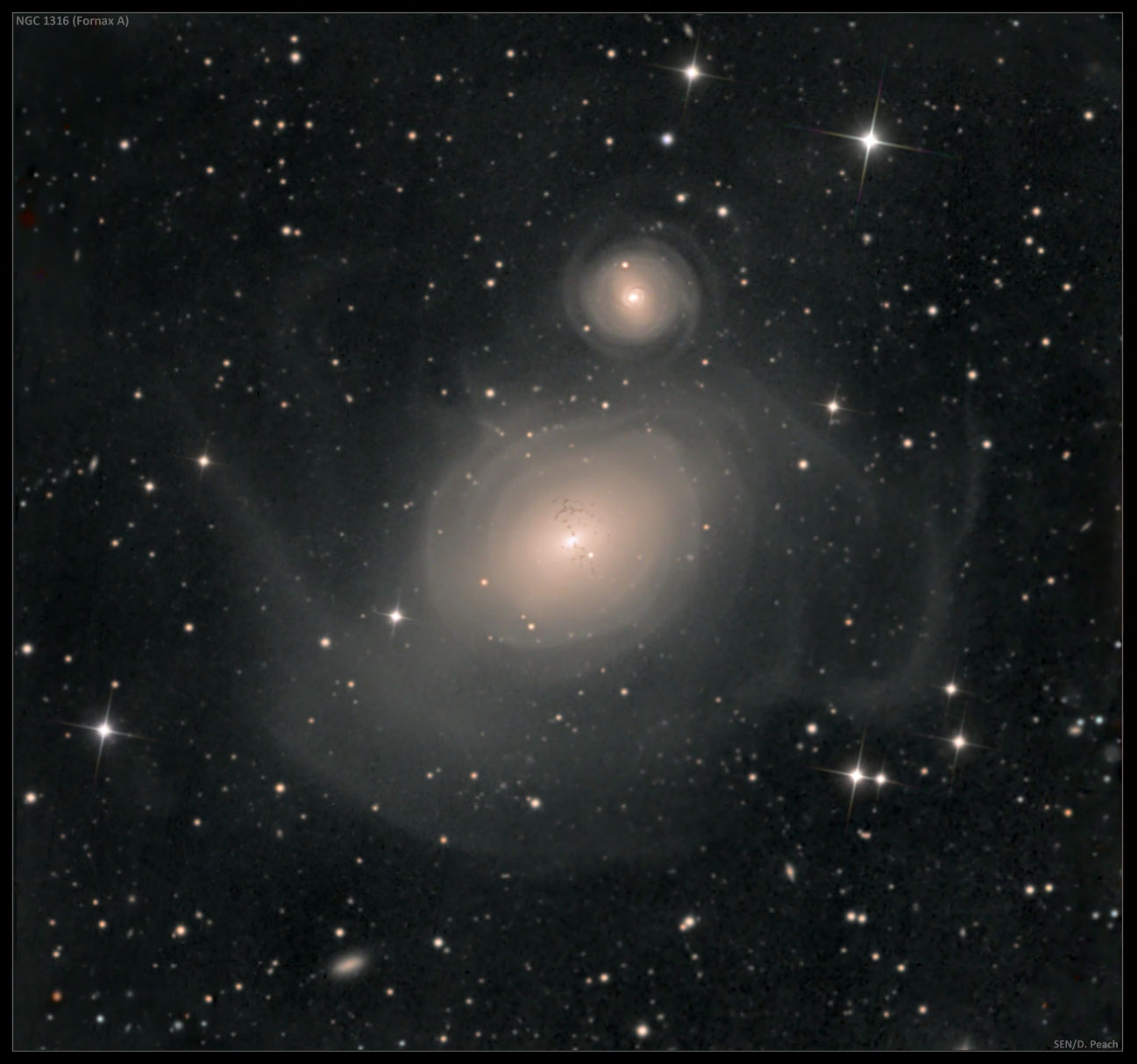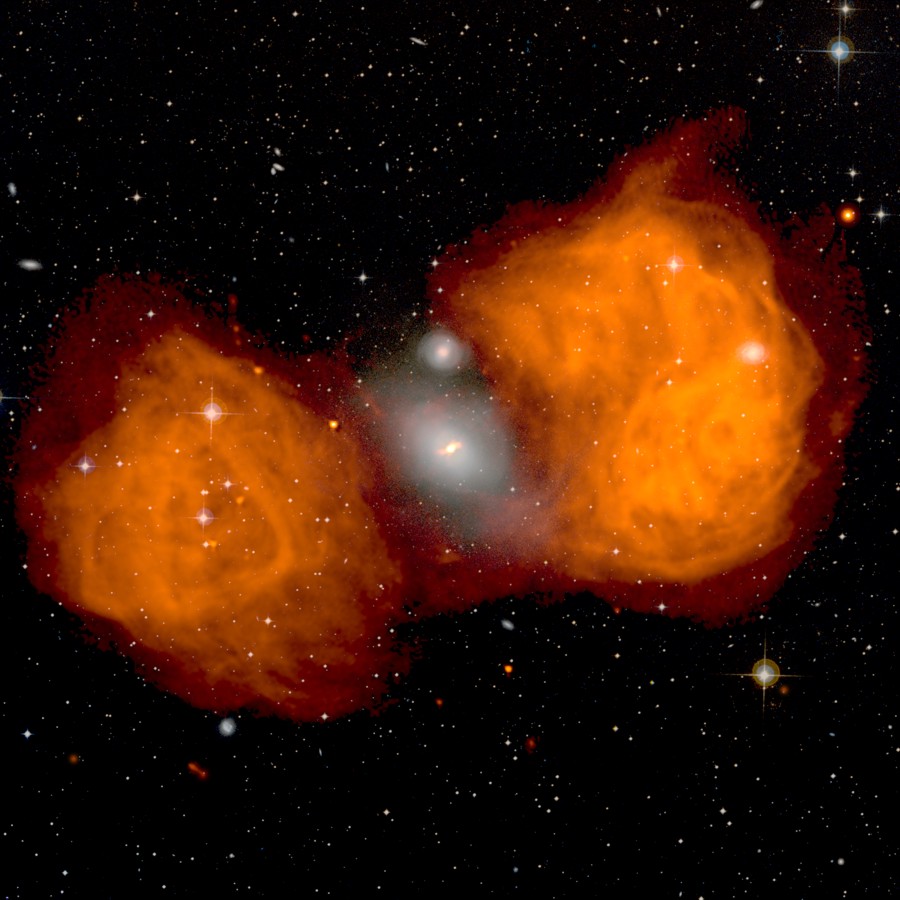Honestly this could be the name of a new TV show, similar to ‘when buildings collapse,’ or ‘here’s what Kim Kardashian did today.’ I’ll take the colliding galaxies, simply because they can hold my attention longer. Galaxy collisions are some of the most massive and long term events in the universe. The result is the formation of billions of stars, the change in orbit of Billions more, and the complete restructuring of a galaxy. Since we see a snapshot of the Universe whenever we look at a single galaxy, we tend to see collisions happening at all stages of the game. A recent APOD shows two galaxies thought to have just started colliding, or in this case, a larger galaxy just about to swallow up a smaller companion.

Looking at the image of NGC 1316, the wobbly patterns of stars around the two galaxies indicate a lot of gravitational interaction as these two galaxies have begun to merge, starting about 100 Million years ago (It takes a long time).
The truly remarkable thing, if you look very closely at the centre of the image, is the dark dots that line the central region of the bigger galaxy. These are actually globular clusters orbiting the bulge of the galaxy. The host galaxy is so bright that these globulars are showing up as a little bit darker than the surrounding stellar field. This is a strange result, as most of the time globular clusters are much denser and brighter than any normal star field, since they are usually the leftovers of dense protogalaxies.
A final interesting point about the galaxies, known as Fornax A, is that there are two giant lobes of gas visible in radio waves.

You can see how massive the lobes are and how far they extend out from the galaxy itself. Could these radio lobes be a result of the collision between these two galaxies? How would they change over time? We don’t really have the option to wait a few more hundred million years, so for now it remains a mystery.
